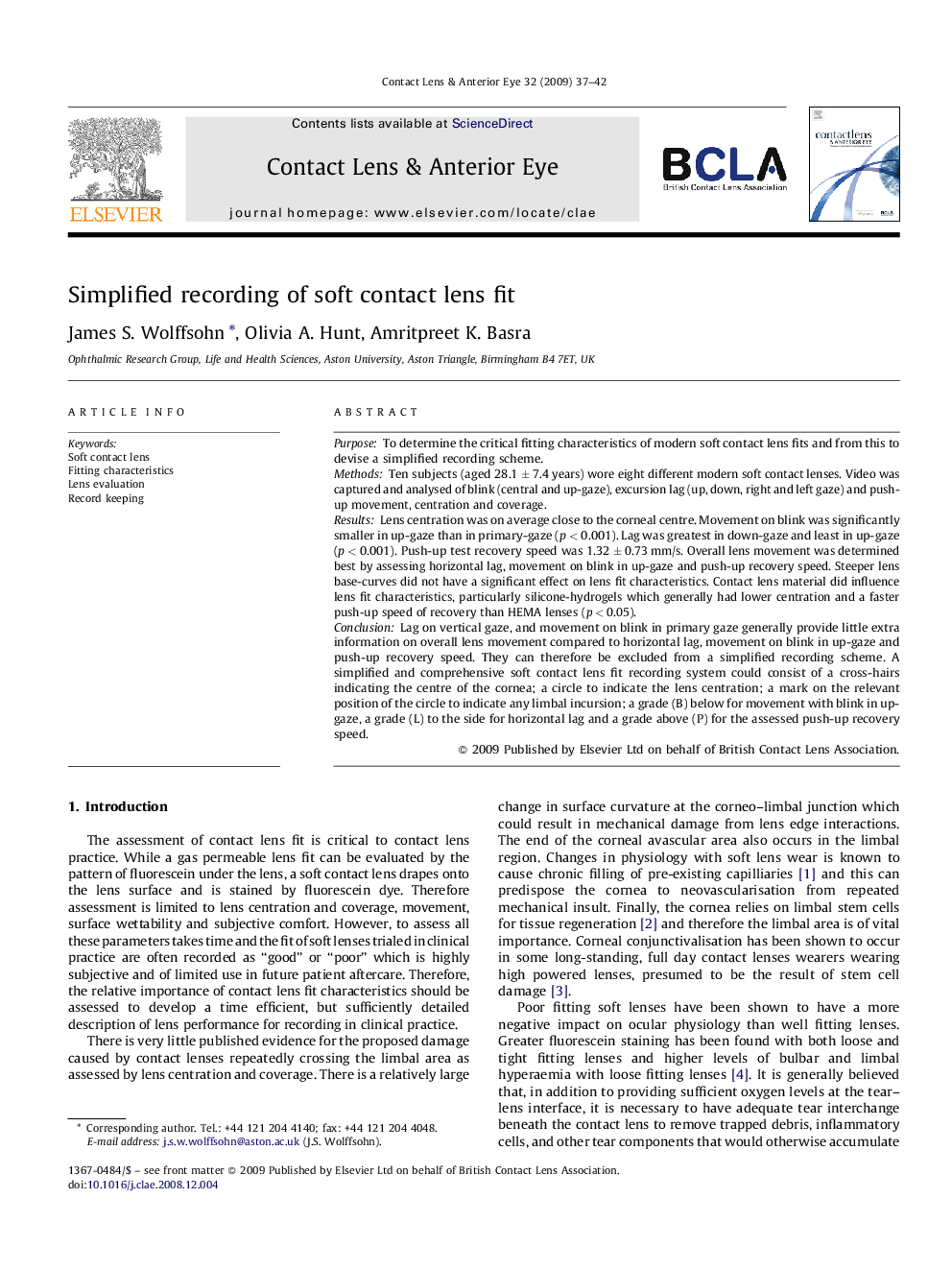| Article ID | Journal | Published Year | Pages | File Type |
|---|---|---|---|---|
| 2698029 | Contact Lens and Anterior Eye | 2009 | 6 Pages |
PurposeTo determine the critical fitting characteristics of modern soft contact lens fits and from this to devise a simplified recording scheme.MethodsTen subjects (aged 28.1 ± 7.4 years) wore eight different modern soft contact lenses. Video was captured and analysed of blink (central and up-gaze), excursion lag (up, down, right and left gaze) and push-up movement, centration and coverage.ResultsLens centration was on average close to the corneal centre. Movement on blink was significantly smaller in up-gaze than in primary-gaze (p < 0.001). Lag was greatest in down-gaze and least in up-gaze (p < 0.001). Push-up test recovery speed was 1.32 ± 0.73 mm/s. Overall lens movement was determined best by assessing horizontal lag, movement on blink in up-gaze and push-up recovery speed. Steeper lens base-curves did not have a significant effect on lens fit characteristics. Contact lens material did influence lens fit characteristics, particularly silicone-hydrogels which generally had lower centration and a faster push-up speed of recovery than HEMA lenses (p < 0.05).ConclusionLag on vertical gaze, and movement on blink in primary gaze generally provide little extra information on overall lens movement compared to horizontal lag, movement on blink in up-gaze and push-up recovery speed. They can therefore be excluded from a simplified recording scheme. A simplified and comprehensive soft contact lens fit recording system could consist of a cross-hairs indicating the centre of the cornea; a circle to indicate the lens centration; a mark on the relevant position of the circle to indicate any limbal incursion; a grade (B) below for movement with blink in up-gaze, a grade (L) to the side for horizontal lag and a grade above (P) for the assessed push-up recovery speed.
